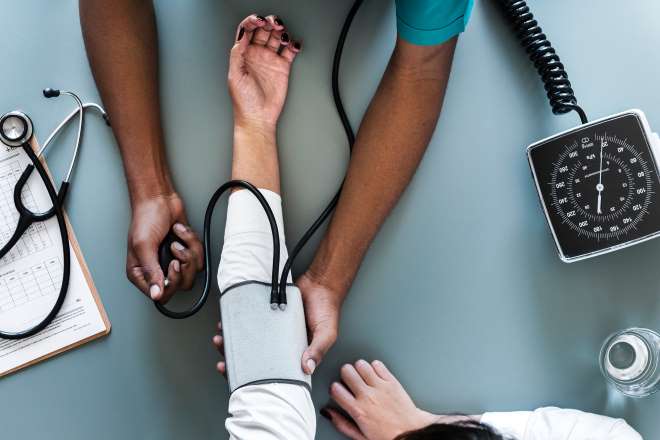Understanding Liver Cirrhosis: Key Signs That Indicate a Potential Problem
Liver cirrhosis is a serious condition that develops when healthy liver tissue is replaced by scar tissue, impeding the organ's ability to function properly. Recognizing the early signs of liver cirrhosis is crucial for timely intervention and management. This article explores the key indicators of liver cirrhosis and how they affect overall health, providing valuable insights for those concerned about their liver function.

What is liver cirrhosis and how does it affect liver function?
Liver cirrhosis is a progressive disease characterized by the replacement of healthy liver cells with fibrous scar tissue. This scarring disrupts the liver’s normal structure and function, impacting its ability to perform vital tasks such as filtering toxins from the blood, producing essential proteins, and regulating blood clotting. As cirrhosis advances, it can lead to liver failure, a life-threatening condition that requires immediate medical attention.
The liver’s compromised function in cirrhosis affects multiple bodily systems. It can lead to a buildup of toxins in the blood, impaired nutrient metabolism, and decreased production of clotting factors. These changes manifest in various symptoms and signs that can help identify the presence of liver cirrhosis.
What role do weight changes and loss of appetite play in cirrhosis diagnosis?
Unexplained weight changes and a loss of appetite are often early indicators of liver cirrhosis. As the liver’s ability to process nutrients decreases, patients may experience unintentional weight loss despite maintaining their usual diet. This weight loss can be accompanied by muscle wasting, known as sarcopenia, which is common in advanced liver disease.
Conversely, some individuals with cirrhosis may gain weight due to fluid retention, particularly in the abdominal area. This apparent weight gain, however, is not healthy and is a sign of advancing liver disease. The loss of appetite, or anorexia, is another significant symptom that can contribute to malnutrition and further compromise the patient’s health.
Why is monitoring abdominal swelling and fluid retention important in cirrhosis?
Abdominal swelling and fluid retention, medically known as ascites, are hallmark signs of advanced liver cirrhosis. As the liver function deteriorates, it leads to increased pressure in the blood vessels that supply the liver (portal hypertension). This pressure causes fluid to leak from the blood vessels and accumulate in the abdominal cavity.
Monitoring ascites is crucial because it can indicate the severity of liver disease and the risk of complications. Severe ascites can cause discomfort, breathing difficulties, and increase the risk of bacterial infections. Regular medical assessment of abdominal swelling helps healthcare providers adjust treatment plans and manage complications effectively.
How can recognizing easy bruising and bleeding help in identifying cirrhosis?
Easy bruising and prolonged bleeding are significant indicators of liver cirrhosis. The liver plays a crucial role in producing clotting factors, proteins essential for blood coagulation. In cirrhosis, the liver’s reduced function leads to decreased production of these factors, resulting in a higher risk of bruising and bleeding.
Patients with cirrhosis may notice that they bruise easily, even from minor impacts. They may also experience prolonged bleeding from small cuts or nosebleeds that are difficult to stop. Recognizing these symptoms is important as they can signal advanced liver disease and the need for immediate medical attention to prevent potentially life-threatening bleeding complications.
What other physical signs might indicate the presence of liver cirrhosis?
Several other physical signs can indicate the presence of liver cirrhosis. These include:
-
Jaundice: A yellowing of the skin and eyes due to the buildup of bilirubin in the blood.
-
Spider angiomas: Small, spider-like blood vessels visible on the skin, often on the chest and face.
-
Palmar erythema: Redness of the palms, typically in the lower part near the thumb and little finger.
-
Gynecomastia: Enlarged breast tissue in men, caused by hormonal imbalances due to liver dysfunction.
-
Muscle wasting: Loss of muscle mass, particularly noticeable in the temple area and upper arms.
Recognizing these signs early can lead to prompt diagnosis and treatment, potentially slowing the progression of liver disease.
How is liver cirrhosis diagnosed and what treatment options are available?
Diagnosis of liver cirrhosis typically involves a combination of physical examination, blood tests, imaging studies, and sometimes liver biopsy. Blood tests can reveal liver function abnormalities, while imaging techniques like ultrasound, CT, or MRI can show liver scarring and signs of portal hypertension.
Treatment for liver cirrhosis focuses on managing symptoms, preventing complications, and slowing disease progression. Options include:
-
Lifestyle changes: Abstaining from alcohol, maintaining a healthy diet, and regular exercise.
-
Medications: To manage specific symptoms or complications like ascites or hepatic encephalopathy.
-
Endoscopic procedures: To treat esophageal varices and prevent bleeding.
-
Liver transplantation: For end-stage liver disease when other treatments are no longer effective.
| Treatment Approach | Purpose | Potential Benefits |
|---|---|---|
| Lifestyle Modifications | Slow disease progression | Improved liver function, reduced complications |
| Medication Management | Symptom control | Better quality of life, management of specific issues |
| Endoscopic Procedures | Prevent bleeding | Reduced risk of life-threatening complications |
| Liver Transplantation | Replace diseased liver | Improved survival and quality of life in suitable candidates |
Prices, rates, or cost estimates mentioned in this article are based on the latest available information but may change over time. Independent research is advised before making financial decisions.
In conclusion, recognizing the signs of liver cirrhosis is crucial for early diagnosis and effective management. From subtle changes in weight and appetite to more visible signs like abdominal swelling and easy bruising, these indicators can prompt timely medical intervention. By understanding these key signs and seeking appropriate medical care, individuals can take proactive steps in managing liver health and improving overall quality of life.
This article is for informational purposes only and should not be considered medical advice. Please consult a qualified healthcare professional for personalized guidance and treatment.




